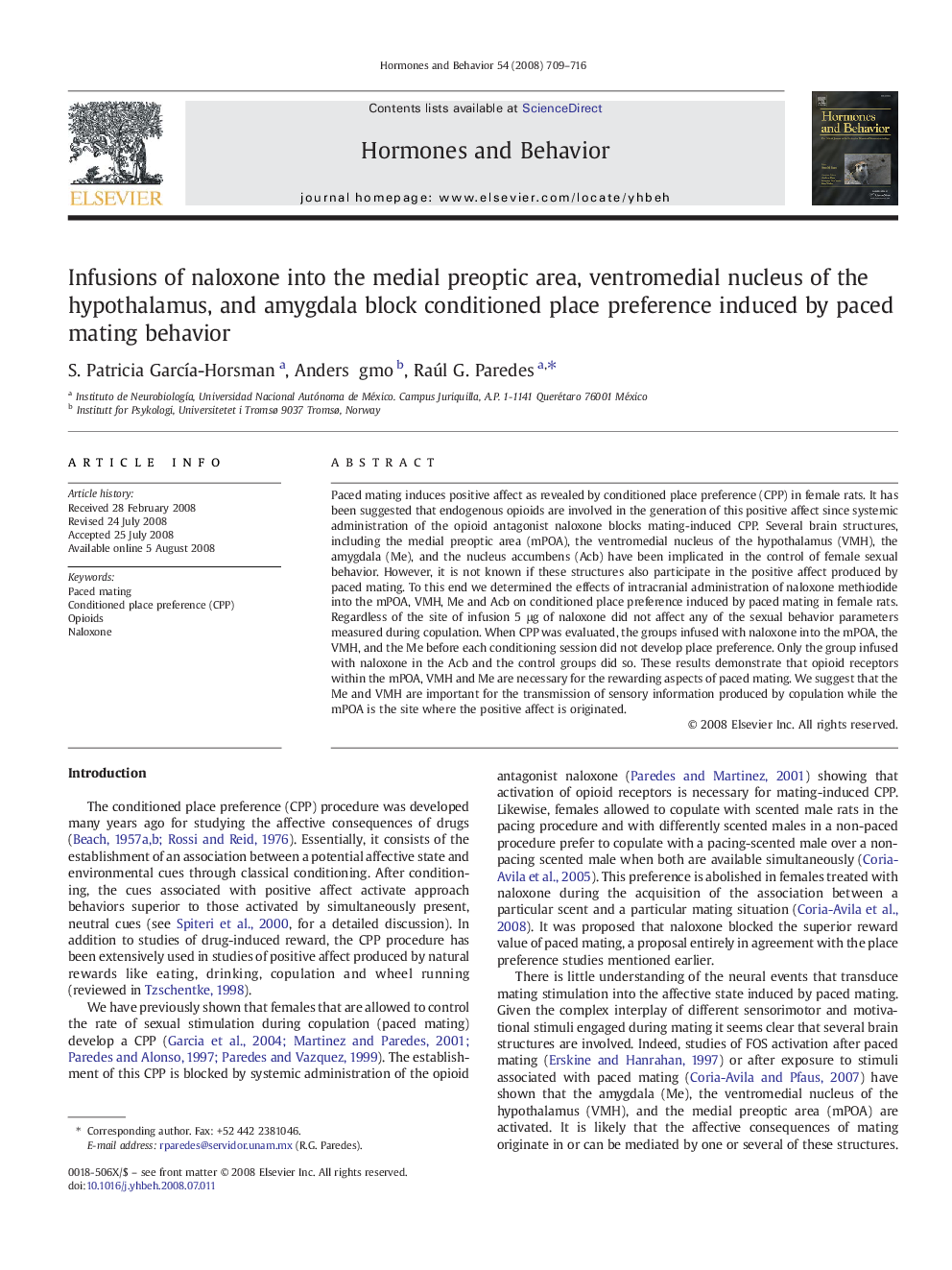| Article ID | Journal | Published Year | Pages | File Type |
|---|---|---|---|---|
| 322866 | Hormones and Behavior | 2008 | 8 Pages |
Paced mating induces positive affect as revealed by conditioned place preference (CPP) in female rats. It has been suggested that endogenous opioids are involved in the generation of this positive affect since systemic administration of the opioid antagonist naloxone blocks mating-induced CPP. Several brain structures, including the medial preoptic area (mPOA), the ventromedial nucleus of the hypothalamus (VMH), the amygdala (Me), and the nucleus accumbens (Acb) have been implicated in the control of female sexual behavior. However, it is not known if these structures also participate in the positive affect produced by paced mating. To this end we determined the effects of intracranial administration of naloxone methiodide into the mPOA, VMH, Me and Acb on conditioned place preference induced by paced mating in female rats. Regardless of the site of infusion 5 μg of naloxone did not affect any of the sexual behavior parameters measured during copulation. When CPP was evaluated, the groups infused with naloxone into the mPOA, the VMH, and the Me before each conditioning session did not develop place preference. Only the group infused with naloxone in the Acb and the control groups did so. These results demonstrate that opioid receptors within the mPOA, VMH and Me are necessary for the rewarding aspects of paced mating. We suggest that the Me and VMH are important for the transmission of sensory information produced by copulation while the mPOA is the site where the positive affect is originated.
